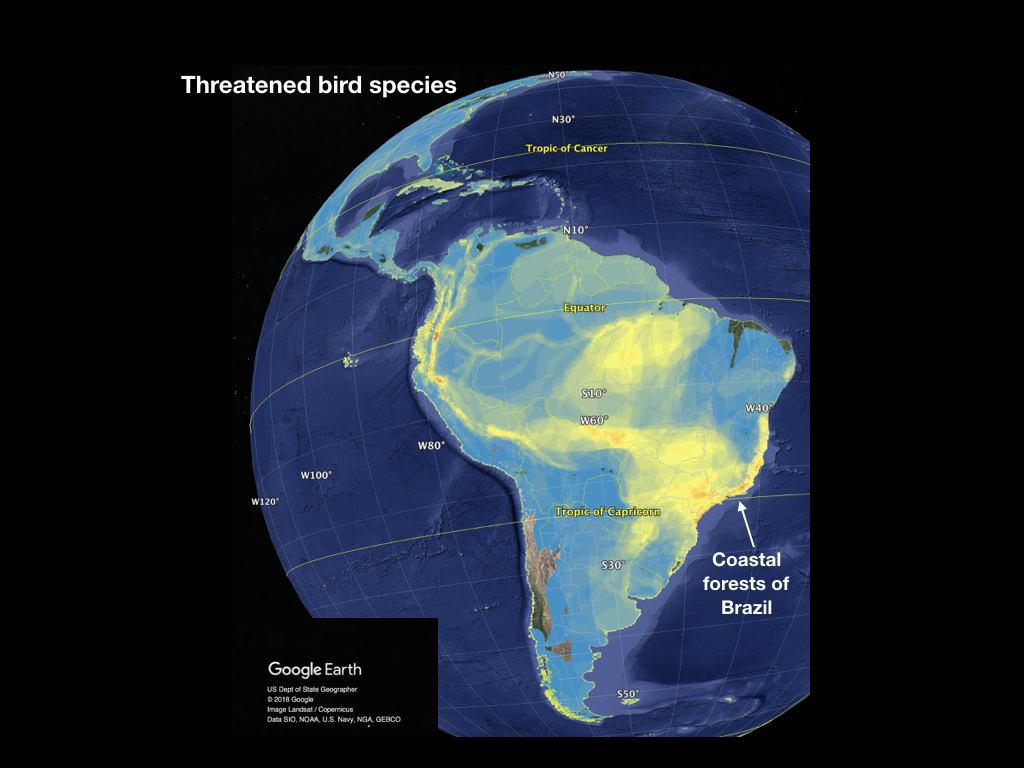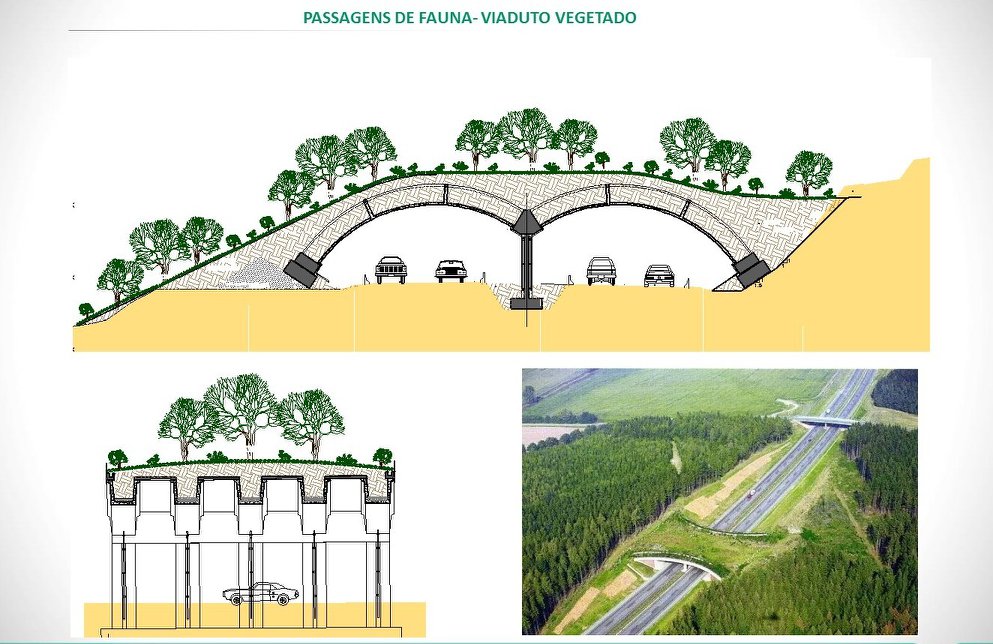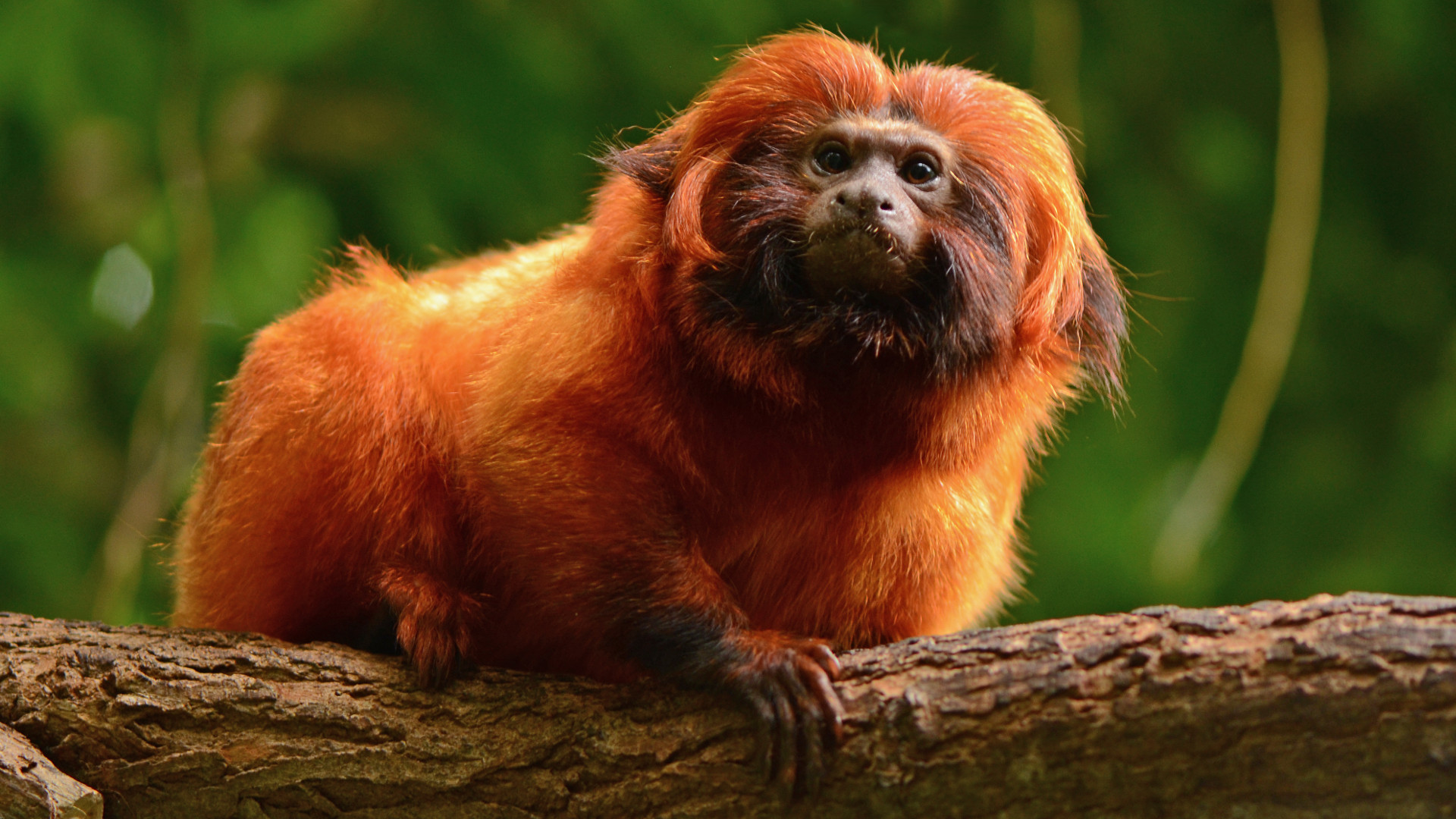Sometimes conserving rare species and habitats requires waiting a few years for all of the pieces of a puzzle to come together.
For one project in coastal Brazil, that process took the better part of a decade. But now, after years of hard work, the puzzle’s nearly complete, and what could end up being one of the world’s most important wildlife corridors is about to emerge.
The Fazenda Dourada corridor in the state of Rio de Janeiro will link two isolated federal biological reserves — União and Poço das Antes — with newly restored forests and a bridge over a major highway, creating a migratory pathway for the endangered golden lion tamarin (Leontopithecus rosalia) and potentially thousands of other imperiled species to travel through previously degraded and fragmented landscapes.
The project is an initiative of Brazil’s Associação Mico-Leão-Dourado (Golden Lion Tamarin Association) and the U.S. nonprofit SavingSpecies. It was enabled by a grant from a Dutch foundation called DOB Ecology.
The iconic golden lion tamarin served as the flagship species for this restoration “because it’s such a charismatic animal,” says Stuart Pimm, Doris Duke chair of conservation at Duke University and president of SavingSpecies. The species was nearly extinct 30 years ago, and the corridor will be essential for their continued recovery, but the location will also serve many other unique species. “Coastal Brazil has more endangered species probably than anywhere else in the Americas,” he says. “It certainly has more endangered birds, but it’s also a major center of endemic mammals and amphibians and something like 6,000 plant species.”

The biodiversity-rich region has also been subject to what Pimm calls “just appalling levels of habitat loss. It’s a very, very fragmented landscape. The habitat that remains is in pieces.” Many of the species that live in this region have very small ranges, he says, placing them at high risk of extinction if their habitats are destroyed or if populations become separated from each other.
The two nonprofits have been working together for the past 10 years — first to acquire land and then to restore roughly 50 miles of forests between the two federal reserves. “We’ve planted more than 30 species of trees,” Pimm says, pointing out that Associação Mico-Leão-Dourado has done most of the hard work on location. “I planted two trees myself, but they’ve planted thousands.”
Restoring habitats takes time, of course, but the 69-year-old Pimm says he’s pleased with how quickly the forests have begun to bounce back. “I thought I might be in my dotage before it did anything, but the amazing thing is that this is a tropical forest. It’s warm and wet and once you give trees a chance to grow, they grow very rapidly.” Some of the trees, he says, have already reached 30 feet in height, and the efforts have visible results. “You can look at the satellite imagery on Google Earth to see how it’s all coming back.”
The final piece of the puzzle took the most time to put into place. Last month the two groups announced they have acquired a 585-acre plot of land near a major highway that runs north of Poço das Antas. About half of that land, which is currently used as pasture, will now be reforested. At the same time, a bridge will be built across the highway, allowing the wildlife in the two reserves to reconnect and expand their habitats.

“I always knew the challenge was going to be to connect these populations across the highway,” Pimm says. “We needed not one miracle, but two. We needed to get the road company to agree to build this habitat bridge so the species could cross the road, which they agreed to do, and then we had to get more land on the other side of the road. We got the money about a year and a half ago. It’s taken that long to get the agreement with the property owner, but now we’ve got the ability to create this really exceptional wildlife corridor.”
The two organizations say this isn’t just about helping wildlife, including the iconic tamarin; it’s also about repairing the “tear” in the Brazilian rainforest. “This is an especially important step toward our vision of connecting and protecting enough forest to support a viable population of golden lion tamarins far into the future,” Luís Paulo Ferraz, executive director of Associação Mico-Leão-Dourado, said in a press release. “Because of the continual threat of forest fragmentation from development and linear infrastructure, restoring and protecting the Atlantic Forest is the only way for its magnificent biodiversity to survive.”
Pimm adds that this corridor, and the decade of forest-restoration efforts associated with it, prove that the puzzle pieces of hard work, determination and a little bit of time can pay off — and possibly change the fate of the world’s most imperiled species. “This is an example of us taking the offense,” he says. “We don’t have to accept that bad things are happening. We’re going to reconnect landscapes. We can use smart, informed science and we can begin to reverse the declines. We can really start taking nature back.”


